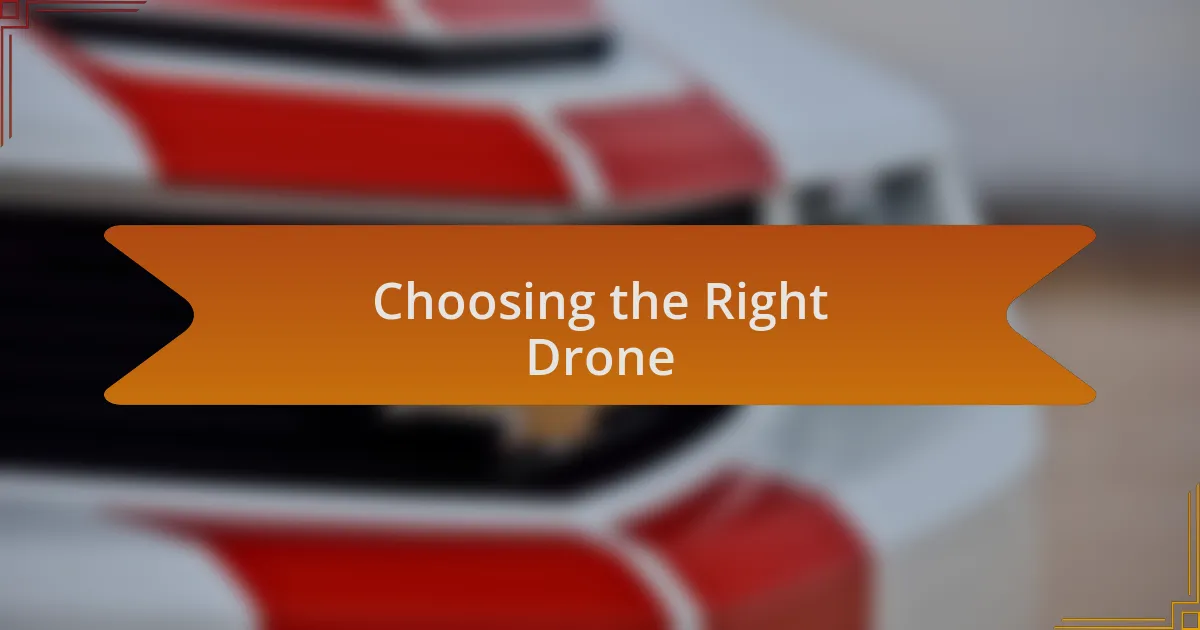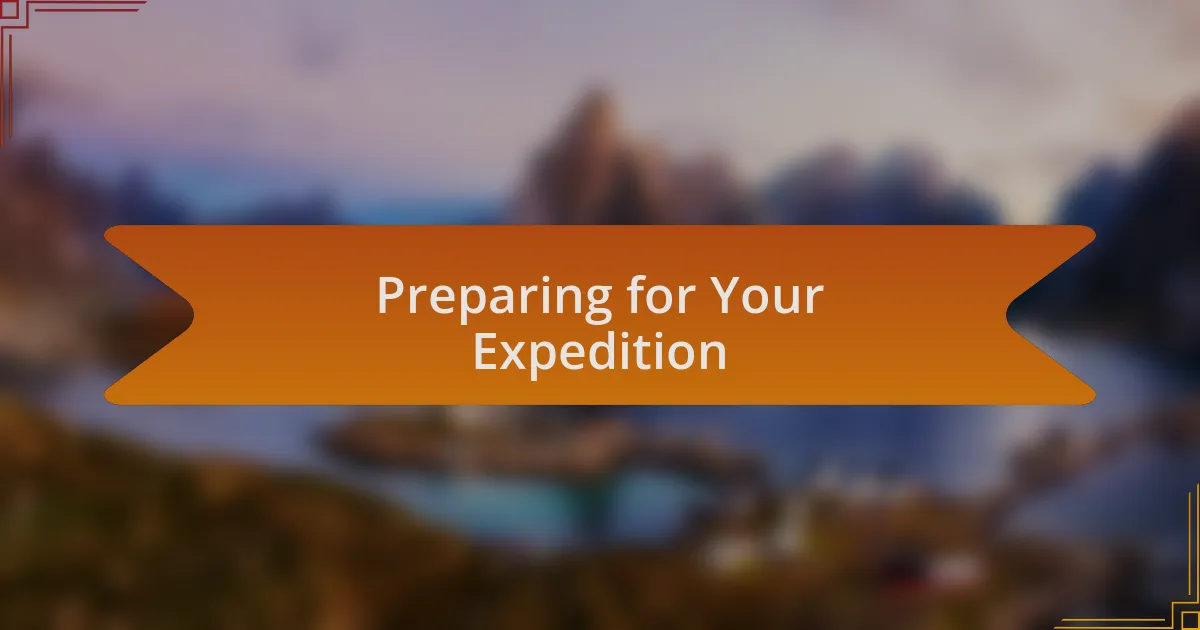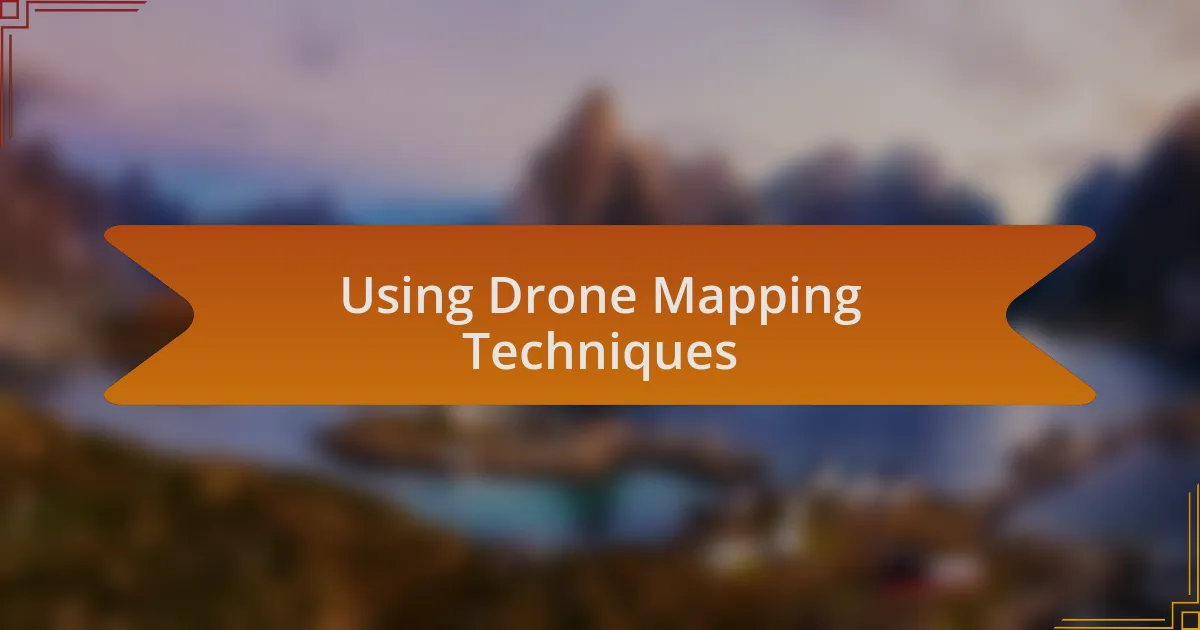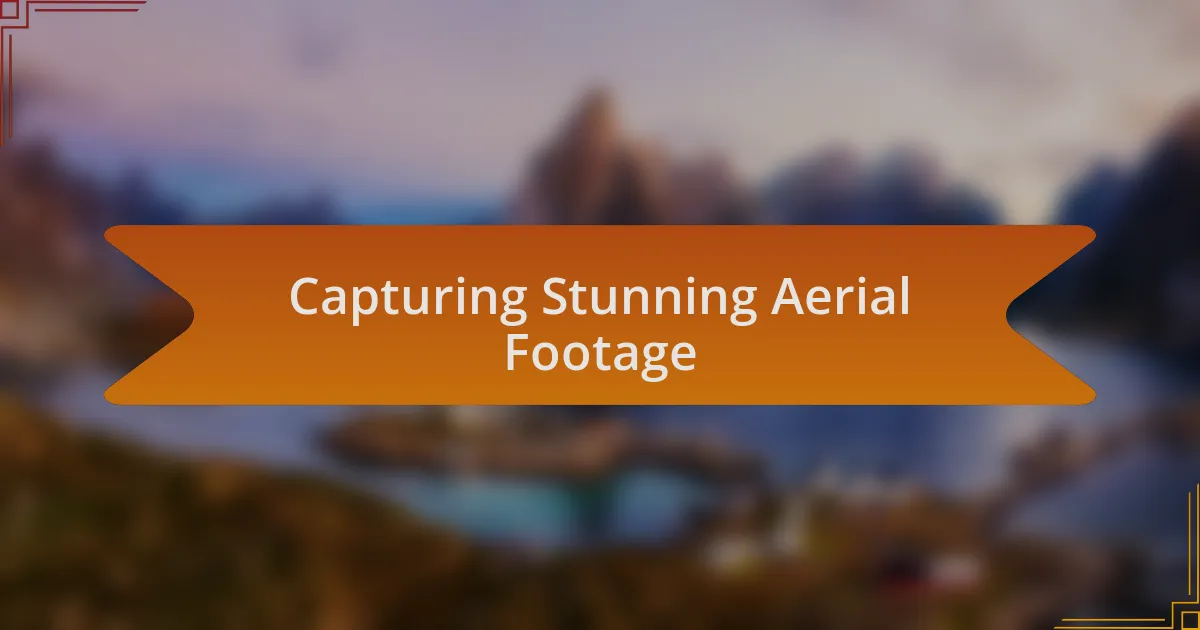Key takeaways:
- Drone mapping provides high-resolution data crucial for urban planning and conservation efforts, enhancing our understanding of landscapes.
- Zanzibar Archipelago is an ecological treasure with diverse cultures and histories that require sustainable tourism practices to preserve its beauty.
- Choosing the right drone involves considering portability, battery life, and weather resistance for effective exploration of varied terrains.
- Personal connections and mindfulness enhance travel experiences, teaching us the value of stories and the beauty found in serene moments.

Introduction to Drone Mapping
Drone mapping has revolutionized the way we capture and analyze landscapes, unlocking a new dimension of detail and perspective. I remember the first time I watched a drone soar above a stunning beach in Zanzibar, capturing not just images but the essence of the sweeping coastline. It left me wondering how many hidden gems lie beneath the surface, just waiting to be uncovered through this technology.
With drone mapping, we can collect data that was once nearly impossible to obtain. The ability to generate high-resolution maps has practical applications, from urban planning to conservation efforts. I often found myself captivated by the clarity of the images, enabling me to spot intricate landforms and vegetation patterns that I could easily overlook on the ground.
Moreover, the process of drone mapping encourages a deeper connection with the environment. Each flight feels like an adventure, a way to explore places I couldn’t easily reach. Have you ever felt the thrill of discovering a new perspective? That sense of exploration translates beautifully into the data we gather, enriching our understanding of landscapes like Zanzibar’s vibrant culture and breathtaking scenery.

Understanding Zanzibar Archipelago
Zanzibar Archipelago is a mosaic of cultures, rich history, and stunning landscapes. Each island, from Unguja to Pemba, tells its own unique story, shaped by centuries of trade and cultural exchange. I remember walking through Stone Town’s narrow streets and feeling the vibrant pulse of the past, where every corner seemed to whisper tales of sultans and spice traders.
In my explorations, I discovered that the archipelago is more than just beautiful beaches; it’s an ecological treasure. The waters surrounding the islands are teeming with marine life, and I often found myself entranced by the coral reefs, each dive revealing a colorful underwater world. Have you ever been so captivated by nature that time seemed to stand still? That’s exactly how I felt, and it deepened my appreciation for the natural wonders we have the responsibility to protect.
Understanding Zanzibar’s geography also requires contemplating the intricate balance between its traditional ways of life and modern demands. I often pondered how drone mapping can aid in sustainable tourism development. It’s crucial to maintain the delicate ecosystems while allowing visitors to experience the archipelago’s magic. In my experience, this synergy can lead to greater awareness and respect for these enchanting islands.

Choosing the Right Drone
Choosing the right drone for exploring the Zanzibar Archipelago is crucial for capturing its breathtaking beauty. During my trips, I quickly learned that not all drones are created equal. I recalled the time I brought a heavy drone for a sunrise shoot and ended up struggling with its weight while hiking up a hill to get the perfect angle. I realized that portability is key, especially when traversing Zanzibar’s varied terrains.
Battery life plays a significant role in drone selection. I once found myself on a remote beach, camera ready, only to have my drone abruptly return home due to low battery. The frustration was palpable! Investing in a drone with extended flight time allowed me to effortlessly cover more ground. This way, I could focus on creating stunning aerial shots without constantly worrying about battery limits.
Additionally, considering the weather conditions in Zanzibar is essential. The tropical climate can be unpredictable, and I remember being caught in unexpected rain while trying to film the lush landscapes. Ensuring your drone is weather-resistant can save you from such dilemmas. I encourage you to think about these factors carefully. What experience do you want to create? The right drone isn’t just about features but understanding how it fits into your adventure in this stunning paradise.

Preparing for Your Expedition
Preparing for your expedition in the Zanzibar Archipelago starts with meticulous planning. I vividly recall the thrill of packing for my first trip—every piece of gear felt crucial. I made a checklist to ensure I didn’t overlook anything, from spare batteries to comfortable hiking shoes. Have you ever forgotten something important on a trip? It can throw off your entire experience.
Researching your destinations is just as essential as packing your gear. I remember stumbling upon a hidden gem called Mnemba Island while reading travel blogs. Knowing which spots are drone-friendly ahead of time can save you from unexpected disappointments, like discovering a no-fly zone after arriving. I often daydream about the breathtaking footage I captured just because I took the time to plan my itinerary.
Lastly, considering your personal limits is vital. On my first day, I was overly ambitious, determined to cover every inch of the archipelago, only to find myself exhausted by midday. I learned the importance of pacing myself and savoring the experience. How do you gauge your own energy levels? Balancing ambition with realism can lead to a more enjoyable and fulfilling expedition.

Using Drone Mapping Techniques
Using drone mapping techniques in the Zanzibar Archipelago was nothing short of exhilarating. With the vibrant blues of the Indian Ocean below me, I felt empowered as I maneuvered my drone, capturing aerial imagery that showcased the archipelago’s stunning landscapes. I still remember the moment when the drone’s camera panned over the coral reefs—was I really witnessing this beauty from such heights?
As I delved deeper into the mapping process, I discovered the importance of pre-programming flight paths. Before setting out, I marked key areas, ensuring the drone flew efficiently without leaving gaps in the data capture. That meticulous planning made all the difference, and I could efficiently collect rich, detailed maps of the island’s geography. Have you ever realized the power of planning, especially when aiming for precision?
Despite the thrill, I faced challenges, like unpredictable winds that sometimes threatened to throw my drone off course. Once, a gust caught me off guard, and my heart raced as I wrestled to regain control. Those moments taught me flexibility and patience—vital traits while navigating both the skies and my own expectations. Do you have a story of overcoming unexpected hurdles on your own adventures? Embracing the learning experiences made the journey all the more rewarding.

Capturing Stunning Aerial Footage
Capturing aerial footage in Zanzibar was profoundly rewarding. I recall the moment my drone soared above the white-sand beaches, revealing the intricate coastline like a piece of art sprawled across the canvas of the ocean. It sparked a thrill in me—how often do we get to see the world from such a breathtaking perspective?
What struck me most was the ever-changing light as the sun began to set. I positioned my drone just right, and when I captured that golden hour glow shimmering on the water, it felt like magic. I couldn’t help but feel a deep appreciation for the unpredictable beauty of nature; you can plan everything, and yet the real masterpiece often occurs spontaneously. Have you ever watched the world shift colors at dusk and felt completely alive?
Each time I edited my footage, I found joy in reliving those moments. When I spotlighted the lush greenery contrasted against the turquoise waves, I knew I was not just documenting but also sharing a piece of Zanzibar’s soul. This experience taught me that every shot tells a story, and as I reflect on my journey, I wonder: how can we elevate our storytelling through the lens?

Reflecting on My Zanzibar Experience
Reflecting on my time in Zanzibar, I often think about the warmth of the people I encountered. One evening, I shared a meal with a local family, and their hospitality left an indelible mark on my heart. In those moments, I realized that the experience is enriched by the connections we forge, reminding me of the essence of travel: it’s not just about the sights, but the stories behind them.
As I look back, the vibrant markets echo in my mind. The colors, smells, and sounds created a whirlwind of sensory memories that are hard to forget. In one bustling stall, I chatted with a spice merchant who shared tales of their craft and legacy. It made me wonder how often we overlook the richness of local culture while lost in our wanderlust. Isn’t it fascinating how a single conversation can transform a typical market visit into a lifetime memory?
The tranquil moments of solitude while flying my drone also linger in my reflections. I remember sitting on a secluded beach, my device hovering above, capturing the rhythmic dance of waves. That sense of peace taught me about mindfulness—about being present in a beautiful moment rather than rushing to the next destination. Have you ever paused to savor your surroundings in a world that often feels hurried?